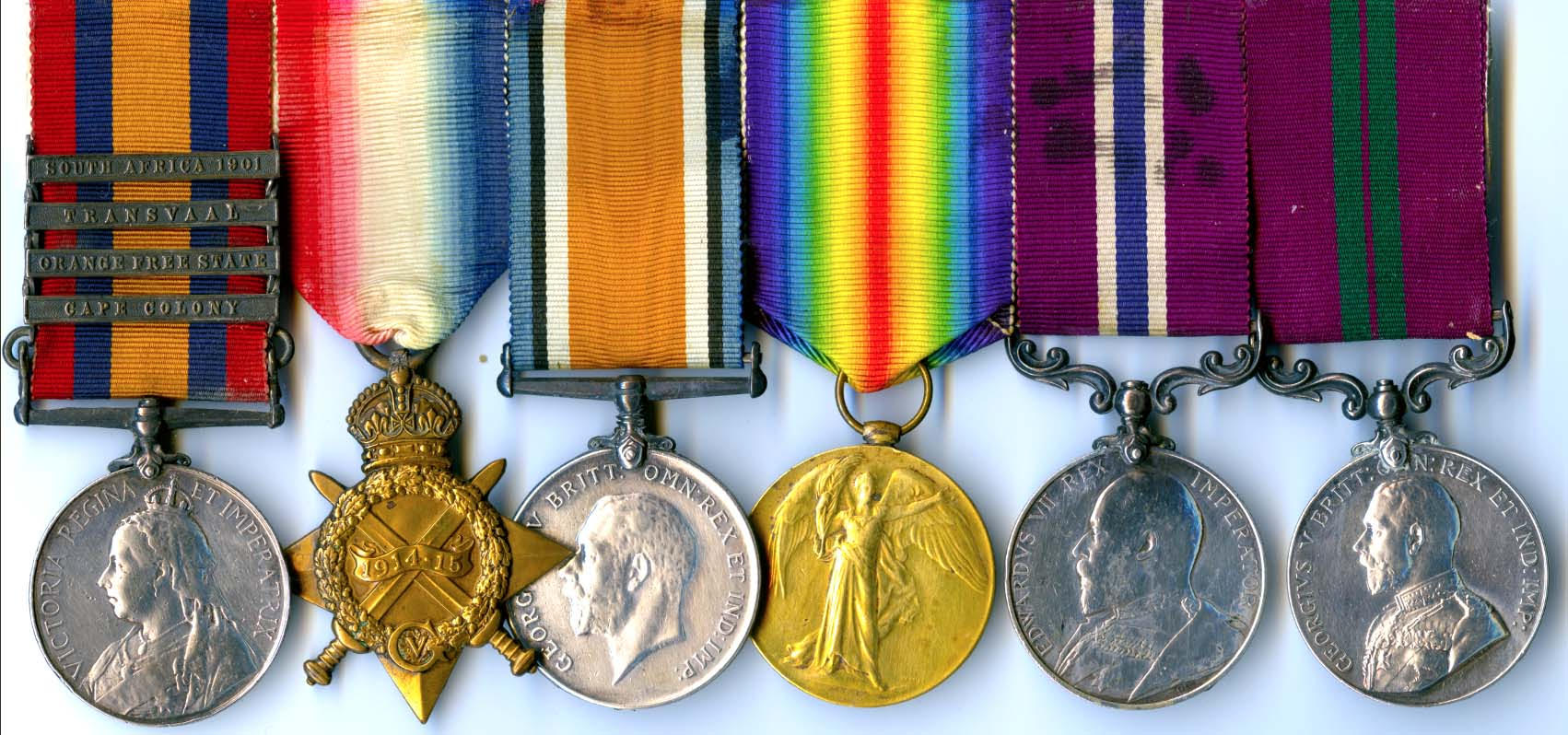Last month on The Cove we started the 'Medals Of The Month' collaboration with the Australian Army Museum of New South Wales. We started with the story of Warrant Officer Class One Colin Watego OAM as part of our NAIDOC Week celebrations. This month we are featuring the medals of Warrant Officer Class Two William Joseph Willis.

Military Medals
- Queen's South Africa Medal (With four clasps for each State he served in)
- 1914-15 Star
- British War Medal
- Victory Medal
- Permanent Forces of the Empire Beyond the Seas Medal (Also know as Long Service and Good Conduct Medal)
- Australian Meritorious Service Medal (Edward VII)
Known Service History
- Gunner (Reg. No. 1613), A Battery, NSW Permanent Artillery 1887
- Sergeant (Reg. No. 2433), 1st Division Ammunition Column, 1st AIF
- Warrant Officer Class Two, Battery Sergeant Major (BSM), 7th Field Artillery Brigade, 1st AIF
Initial Service
William Willis enlisted in the NSW Military Forces on 14 October 1887 and A Battery, NSW Artillery. Formed in 1871, A Battery is the oldest permanent unit in the Australian Army and was trained and organised to replicate the Royal Artillery after the Royal Garrison Artillery was withdrawn from costal defence duties in Australia. In 1885, A Battery was sent to the Sudan and it is likely that Willis joined them shortly after their return.
South Africa
A Battery embarked for South Africa on 30 December 1899, in the transport Warrigal. The battery numbered 177 men, consisting of seven officers and 170 other ranks, and 148 horses. Five men were veterans of the Sudan. The battery was equipped with six 15-pounder guns and was organised into three field sections with two guns each. In 1901 the first draft received 44 reinforcements and another 19 horses. It is not known whether Willis deployed with the original contingent or with the reinforcements, but the bars on his Queen's South Africa medal indicate he saw extensive service there.
A Battery arrived in Cape Town on 5 February 1900 and soon joined General Settle's column, which was clearing the districts of Prieska, Kenhardt, and Goodania, in the north-west of the Cape Colony. In December a section from battery joined Colonel Crabbe's column, operating in the Orange River. The battery remained with Crabbe until March 1901, when it took part in the chase of the Boer leader De Wet, in the Hopetoun district, and was instrumental in the capture of De Wet's guns, north of Pompean Pan. Another part of the battery was attached to Colonel Grenfell's column, in the Graff Reinet district. While part of the battery was employed in the Cape Colony, the other part was used in the Transvaal, with Colonels Williams' and Remington's columns, operating against the Boer commandos.
For most of its time in South Africa, the battery was split up and hardly served together as a complete unit. In October 1900 the battery's commander, Colonel S.C.U. Smith noted in his diary: "My battery now has its right section at Vryburg, its left at Prieska, and the centre here [Upington], thus covering a front of 360 miles."
World War One
Willis must have left the Army after South Africa as he rejoined the Army on 29 August 1914 as a Sergeant in the Divisional Artillery Column, the same month Britain and the Empire declared war on Germany. By the end of the war he was serving as a Battery Sergeant Major in the 7th Field Artillery Brigade, 1st Australian Imperial Force.
The 7th Field Artillery Brigade, 3rd Division, AIF was formed at the "Warren" a one time convent, in the suburb of Marrickville, NSW on 17 March 1916, under the command of Lieutenant Colonel R. St. J. Pearce, VD. The Brigade comprised Brigade Headquarters, 25, 26, 27 and 28 Field Batteries (each of four 18 pounder guns) and 7th Field Brigade Ammunition Column. The Brigade embarked at Sydney on HMAT Argyllshire on the 11 May 1916. It arrived at Portsmouth, England on 11 July. Training took place at Larkhill, Salisbury Plains, Wiltshire where the 23rd Howitzer Brigade was abolished and 107 Howitzer Battery of this Brigade, with 4.5 inch howitzers, was allocated to 7th Field Artillery Brigade. 28 Field Battery was allocated to a new artillery brigade, the 23rd Field Artillery Brigade.
The brigade disembarked at Le Havre, France on 31 December 1916. At Stazeele in January 1917 a further reorganisation of the Brigade occurred. The batteries were reformed and made into six gun batteries. The original 27 Battery was cut up and its personnel allocated amongst the other batteries. A new 27 Battery was formed out of the now disbanded 23 Field Artillery Brigade. This reorganisation was to economise on battery commanders, who were in short supply.
The Brigade went into action on 17 January 1917 at Armentieres and took part in the battles of Menin Road, Broodseinde, Passchendaele, Morlancourt, Mont St. Quentin, Messines and the Hindenburg Line. Towards the end of the war, in 1918, the Brigade served with the 27th United States Division. On 3 April 1919 the 7th and 8th Field Artillery Brigades were amalgamated. By the end of April only about 250 men remained in both brigades and on 1 May 1919 2nd Division Artillery and 7th Field Artillery Brigade ceased to function. The remaining personnel were formed into one battery (26 Field Battery) and attached to 4th Field Artillery Brigade for demobilisation. On 18 August 1919, the Brigade was removed from the line of battle
After serving more than 36 years, William took discharge on 17 January 1924. He lived in Paddington, Sydney until his death.
A copy of Williams war service record can be found at the National Archives of Australia.
__________________
Additional information on unit deployments, including some replicated above, can be found on the Australian War Memorial Site and the website of the 7th Field Regiment RAA Association.









